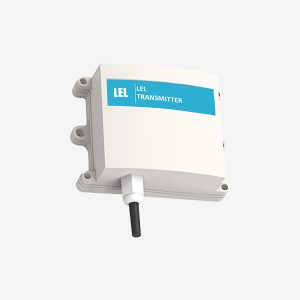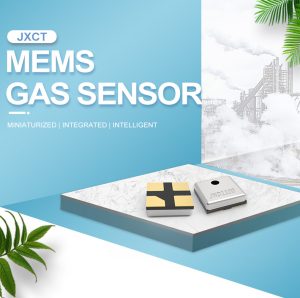In today's rapidly urbanizing world, the concept of smart cities has gained significant traction. A key aspect of creating smarter cities is the implementation of advanced technologies that enhance the quality of life for residents. One critical area that requires attention is pollution monitoring. With the advent of gas sensors, it is now possible to detect and monitor air pollution in real-time, enabling proactive measures to improve air quality. In this article, we will explore the impact of gas sensors on pollution monitoring in smart cities and their potential for creating cleaner and healthier urban environments.

- Understanding Air Pollution in Urban Areas:
Urban areas are often characterized by high levels of air pollution due to various factors, including industrial activities, vehicle emissions, and construction activities. Exposure to pollutants such as particulate matter (PM), nitrogen dioxide (NO2), sulfur dioxide (SO2), and volatile organic compounds (VOCs) can have detrimental effects on human health, leading to respiratory illnesses, cardiovascular problems, and even premature death. Monitoring and controlling air pollution is crucial for creating healthier and more sustainable urban environments.
- Role of Gas Sensors in Pollution Monitoring:
Gas sensors are devices that detect and measure the concentration of gases and VOCs in the air. These sensors utilize various sensing mechanisms, such as electrochemical, optical, and semiconductor sensors, to detect specific pollutants. The collected data is transmitted to a central monitoring system, which provides real-time feedback on the air quality, allowing for timely intervention measures.
- Enhancing Pollution Monitoring in Smart Cities:
The integration of gas sensors into pollution monitoring systems has revolutionized the way air quality is managed in smart cities. Here are some significant impacts of gas sensors on pollution monitoring:
3.1 Real-time Monitoring: Gas sensors provide real-time data on air pollutants, eliminating the need for manual sampling and laboratory analysis. This real-time monitoring capability allows for prompt identification of changes or anomalies in air quality, enabling proactive management strategies to improve air quality.
3.2 Spatial Mapping of Pollution: Gas sensors deployed throughout a city provide spatial mapping of pollution levels. This data helps identify pollution hotspots, enabling targeted interventions and resource allocation to areas with the highest pollution levels. By focusing on specific areas, authorities can implement measures to reduce pollution and protect vulnerable populations.
3.3 Early Detection of Pollutants: Gas sensors enable early detection of air pollutants. By continuously monitoring key parameters, any deviations from acceptable ranges can be detected early on, triggering immediate response measures to mitigate pollution sources and improve air quality.
3.4 Data-driven Decision Making: Real-time data provided by gas sensors allows for data-driven decision making. City authorities can use this information to develop effective pollution control strategies, optimize transportation systems, and implement policies that encourage cleaner industries and sustainable urban planning.
- Citizen Engagement and Awareness: Gas sensors in smart cities have the potential to engage citizens in environmental issues and increase awareness about air pollution. Real-time air quality data can be made accessible to the public through mobile applications and online platforms, allowing residents to make informed decisions about their daily activities and take necessary precautions to protect their health.
- Future Prospects and Challenges:
While gas sensors have demonstrated significant benefits in pollution monitoring, certain challenges need to be addressed for their widespread adoption. These include the cost of sensor installation and maintenance, data management, and ensuring sensor accuracy and reliability. Overcoming these challenges requires collaboration between stakeholders, including governments, research institutions, and technology developers, to develop cost-effective solutions and standardized protocols for sensor deployment.

Conclusion:
Gas sensors are revolutionizing pollution monitoring practices in smart cities by providing real-time monitoring and analysis capabilities, facilitating proactive decision-making, and engaging citizens in environmental issues. The integration of these sensors in pollution monitoring processes enhances pollution detection, enables targeted interventions, supports data-driven decision making, and raises awareness about air pollution. As technology continues to advance, gas sensors hold immense potential for creating cleaner and healthier urban environments, thereby contributing to the development of smarter and more sustainable cities.
 : +86 155 8830 2704
: +86 155 8830 2704 : jxdziot@gmail.com
: jxdziot@gmail.com
